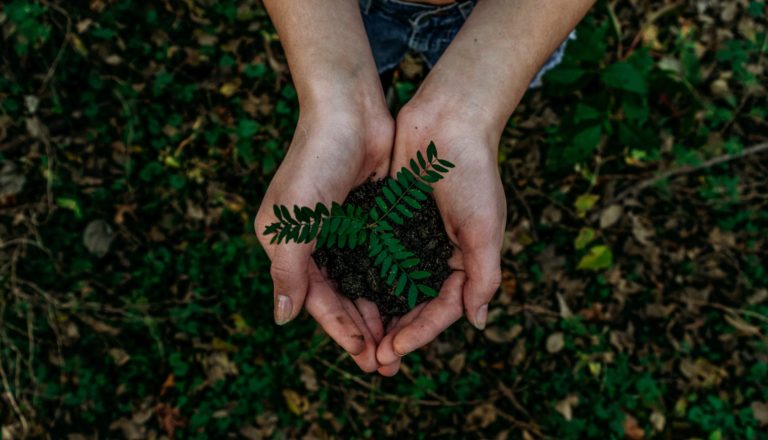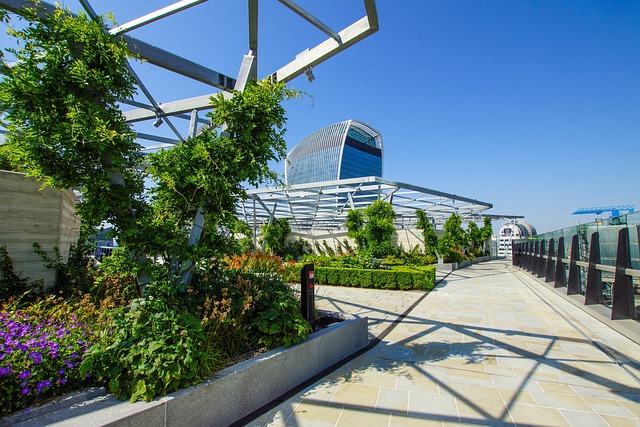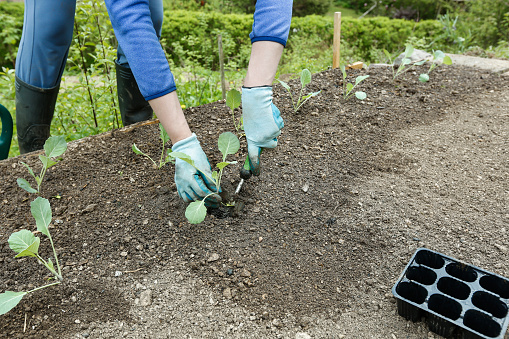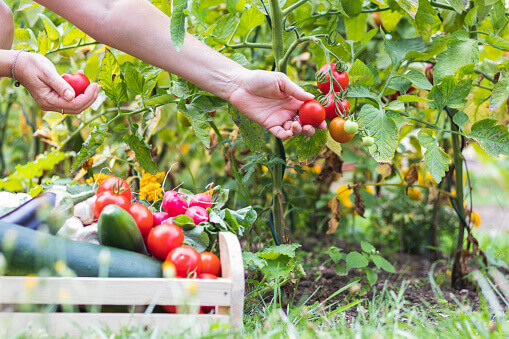Best Pollinator Plants for Your Veggie Garden
[et_pb_section fb_built=”1″ _builder_version=”4.8.1″ _module_preset=”default”][et_pb_row _builder_version=”4.8.1″ _module_preset=”default”][et_pb_column type=”4_4″ _builder_version=”4.8.1″ _module_preset=”default”][et_pb_text admin_label=”Introduction” _builder_version=”4.8.1″ _module_preset=”default”]
Want to boost the productivity of your vegetable garden and ensure a bountiful harvest?
Did you know that planting the right pollinator plants can attract beneficial insects like bees, butterflies, and hummingbirds to your garden?
[/et_pb_text][et_pb_image src=”https://www.urban-gardener.co.za/wp-content/uploads/2024/03/Pollinator-plants.jpg” alt=”Pollinator plants in a garden” title_text=”Pollinator-plants” align=”center” _builder_version=”4.8.1″ _module_preset=”default”][/et_pb_image][et_pb_text _builder_version=”4.8.1″ _module_preset=”default”]
Studies have shown that adding pollinator-friendly plants to your vegtable garden can increase the yields of your veggie plants. By providing a source of food and nesting opportunities for these pollinators, you not only help them thrive but also support the pollination process that leads to the production of delicious and healthy vegetables.
Curious to know which pollinator plants are best for your veggie garden? Keep reading to find out!
[/et_pb_text][et_pb_text admin_label=”H2 – Why Pollinator Plants are Important for Vegetable Gardens” _builder_version=”4.8.1″ _module_preset=”default”]
Why Pollinator Plants are Important for Vegetable Gardens
[/et_pb_text][et_pb_text _builder_version=”4.8.1″ _module_preset=”default”]
Crop plants in vegetable gardens rely on pollinators, such as bees and insects, for successful pollination.
Without pollinators, many vegetable plants, including zucchini, pumpkins, cucumbers, and melons, would not produce fruit.
Pollinators transfer pollen from the male flowers to the female flowers, enabling fruit development. Some vegetable plants have both male and female reproductive parts in the same flower, while others have separate male and female flowers.
By planting pollinator-friendly plants in your vegetable garden, you can attract these important insects and ensure a bountiful harvest.
[/et_pb_text][et_pb_video src=”https://youtu.be/vYdaOK-4f80″ _builder_version=”4.8.1″ _module_preset=”default”][/et_pb_video][et_pb_text _builder_version=”4.8.1″ _module_preset=”default” custom_padding=”5px|||||”]
“Pollinators are a crucial part of the ecosystem. They play a key role in the reproduction of plants, including the vegetables we grow in our gardens.”
Having a diverse range of pollinator plants in your vegetable garden will attract a variety of pollinating creatures. As they visit the flowers for nectar and pollen, they inadvertently transfer pollen from the male to the female flowers, facilitating pollination. Ta da!
With pollination, the flowers are fertilized, and the plants can develop fruits and vegetables.
The more pollinators you attract to your vegetable garden, the higher your chances of a successful harvest.
Furthermore, diverse pollinator populations are indicative of a healthy and balanced ecosystem.
By providing a suitable environment for pollinators, you are contributing to the overall well-being of your garden and the surrounding ecosystem.
[/et_pb_text][et_pb_text admin_label=”H2 – Native vs Cultivated Pollinator Plants” _builder_version=”4.8.1″ _module_preset=”default”]
Native vs Cultivated Pollinator Plants
[/et_pb_text][et_pb_text _builder_version=”4.8.1″ _module_preset=”default”]
When selecting pollinator plants for your vegetable garden, you have the option of choosing native plants or cultivated plants.
Native plants, such as echinacea and monarda, naturally occur in certain regions and have evolved to attract local pollinators. They provide a reliable source of nectar and pollen, and they often bloom at sequential times from spring to fall, ensuring a continuous food supply for pollinators.
Contact your local garden center to find out which are the native plants in your area.
Cultivated plants, on the other hand, are selected and bred for specific traits, such as longer blooming periods or larger flowers. These cultivated pollinator plants, like hybrid varieties of salvia or butterfly bush, are designed to be visually appealing while still providing nectar and pollen for pollinators.
Both native and cultivated plants can be beneficial to your garden. Native plants are well-adapted to the local environment and can support a diverse range of pollinators, including bees, butterflies, and hummingbirds.
Cultivated plants, with their showy blooms and modified characteristics, can also provide a colorful and attractive habitat for pollinators to thrive.
By incorporating a combination of native and cultivated pollinator plants, you can create a garden that offers both aesthetic beauty and ecological benefits. These plants will not only attract pollinators but also enhance the overall health and biodiversity of your vegetable garden.
[/et_pb_text][et_pb_image src=”https://www.urban-gardener.co.za/wp-content/uploads/2024/03/Pollinators.jpg” alt=”Pollinators” title_text=”Pollinators” _builder_version=”4.8.1″ _module_preset=”default”][/et_pb_image][et_pb_text _builder_version=”4.8.1″ _module_preset=”default”]
Benefits of Native Plants
Native pollinator plants have several advantages when it comes to supporting pollinators:
- They require less maintenance because they are adapted to the local climate and soil conditions.
- Native plants have deep root systems that improve soil health by increasing water infiltration and reducing erosion.
- They provide a natural source of nectar and pollen that pollinators have evolved to rely on.
Advantages of Cultivated Plants
Cultivated pollinator plants also offer unique benefits:
- Cultivated plants often have larger and more vibrant flowers, attracting pollinators with their colors and shapes.
- They may have extended or staggered blooming periods, providing a consistent food source for pollinators throughout the growing season.
- Cultivated plants may exhibit improved disease resistance or greater tolerance to environmental conditions, ensuring their longevity in the garden.
Ultimately, the choice between native and cultivated pollinator plants depends on your specific gardening goals and preferences. Some gardeners prefer to focus on native species to support local ecosystems, while others enjoy the variety and aesthetics of cultivated varieties.
Whichever you choose, incorporating a mix of good pollinator plants will attract a diverse range of pollinators and contribute to a thriving and fruitful vegetable garden.
[/et_pb_text][et_pb_text admin_label=”H2 – Choosing the Right Pollinator Plants” _builder_version=”4.8.1″ _module_preset=”default”]
Choosing the Right Pollinator Plants
[/et_pb_text][et_pb_text _builder_version=”4.8.1″ _module_preset=”default”]
When it comes to attracting pollinators to your vegetable garden, selecting the right pollinator plants is crucial. Different pollinators are drawn to specific flower colors and shapes, so it’s important to cater to their preferences.
> Bees are attracted to flowers in shades of white, blue, purple, and yellow.
> Butterflies, on the other hand, seek out vibrant colors like red, yellow, purple, pink, and orange.
> Hummingbirds opt for bright red flowers with a tubular shape.
To ensure a diverse range of pollinators in your garden, it’s recommended to plant a variety of long-blooming perennials, annuals, and herbs.
Perennial flowers such as coneflowers, phlox, and daisies can provide a continuous source of nectar and attract a variety of pollinators throughout the growing season.
Annuals like marigolds, zinnias, and cosmos are also known to be popular among bees, butterflies, and hummingbirds.
Another important aspect to consider when choosing pollinator plants is the placement of your garden. Pollinators, especially butterflies and bees, are attracted to sunny areas. Make sure your garden receives ample sunlight throughout the day to encourage the pollinators to visit.
“The more diverse your pollinator garden is, the more likely you are to attract a wide range of pollinators.”
Adding Compost for Optimal Plant Growth
In addition to selecting the right pollinator plants and creating an inviting environment, it’s crucial to provide your plants with proper nutrition. Incorporating compost into the soil can greatly enhance plant growth and the overall health of your garden. Compost is rich in organic matter and nutrients, which help the flowers thrive and attract more pollinators.
To incorporate compost into your garden, simply mix it into the soil before planting your pollinator plants. Aim for a 2-3 inch layer of compost and ensure it is well-distributed throughout the planting area.
As the compost breaks down, it releases essential nutrients that nourish the plants, promoting healthy blooming and attracting a greater number of bees, butterflies, and hummingbirds to your garden.
The Importance of Pollinator Plants
By choosing the right pollinator plants and providing them with a favorable environment, you can create a vibrant and inviting space for bees, butterflies, and hummingbirds. These pollinators play a critical role in the reproduction of vegetable plants, ensuring a bountiful harvest in your garden. leading to the formation of fruits and vegetables.
Remember, a diverse range of pollinator plants that bloom throughout the growing season will attract a greater variety of pollinators to your garden. So, plan your plantings carefully, considering the colors, shapes, and flowering periods of the selected plants. By creating an enticing habitat for these important visitors, you not only support the health of your garden but also contribute to the overall well-being of pollinators in your area.
[/et_pb_text][et_pb_text admin_label=”H2 – Annual and Perennial Pollinator Plants for Vegetable Gardens” _builder_version=”4.8.1″ _module_preset=”default”]
Annual and Perennial Pollinator Plants for Vegetable Gardens
[/et_pb_text][et_pb_text _builder_version=”4.8.1″ _module_preset=”default”]
When it comes to attracting pollinators to your vegetable garden, incorporating a variety of annual and perennial flowers is key.
Annual flowers like basil, borage, catmint, chives, dill, lavender, oregano, rosemary, and rue are not only culinary delights but also excellent choices for attracting pollinators. These plants bloom throughout the growing season, providing a continuous supply of nectar to attract bees, butterflies, and other pollinators.
“Annual flowers like basil, borage, catmint, chives, dill, lavender, oregano, rosemary, and rue are excellent choices for attracting pollinators.”
Perennial flowers also play a vital role in attracting pollinators to your garden. Allium, anise hyssop, aster, bee balm, liatris, and cat’s pajamas are just a few examples of perennial flowers that bloom in spring, summer, and fall. These plants add color and beauty to your garden while providing a valuable food source for pollinators throughout the seasons.
[/et_pb_text][et_pb_text admin_label=”H3 – The Benefits of Perennial Flowers:” _builder_version=”4.8.1″ _module_preset=”default”]
The Benefits of Perennial Flowers:
[/et_pb_text][et_pb_text _builder_version=”4.8.1″ _module_preset=”default”]
- Perennial flowers bloom in multiple seasons, providing a consistent food source for pollinators.
- These plants often have a robust root system, making them more resilient and adaptable to different weather conditions.
- Perennial flowers require less maintenance compared to annuals as they come back year after year.
In addition to annual and perennial flowers, don’t forget about the power of herbs in attracting pollinators.
Basil, thyme, oregano, fennel, dill, and parsley are not only aromatic additions to your garden but also valuable food sources for pollinators. By including a variety of herbs in your vegetable garden, you can create a multifunctional space that supports both your culinary needs and the needs of pollinators.
[/et_pb_text][et_pb_image src=”https://www.urban-gardener.co.za/wp-content/uploads/2024/03/Bees-are-to-flowers.jpg” alt=”Bee pollinator sitting on a yellow daisy” title_text=”Bees are to flowers” _builder_version=”4.8.1″ _module_preset=”default”][/et_pb_image][et_pb_text admin_label=”H2 – Shrubs and Trees for Pollinator Gardens” _builder_version=”4.8.1″ _module_preset=”default” custom_margin=”28px|||||”]
Shrubs and Trees for Pollinator Gardens
[/et_pb_text][et_pb_text _builder_version=”4.8.1″ _module_preset=”default”]
Shrubs and trees are not only beautiful additions to your garden, but they also play a vital role in attracting pollinators. Including these plants in your vegetable garden can create a diverse and attractive habitat that entices pollinators such as bees, butterflies, and other beneficial insects.
Shrubs are particularly known for their ability to attract pollinators.
* Butterfly bush (Buddleja)
* Salvia
* Goldenrod (Solidago)
* Joe Pye weed (Eupatorium) are excellent choices.
These shrubs produce stunning flowers and it won’t be long before your garden is buzzing! .
Trees also have a significant impact on pollinator activity. Fruit trees, such as:
* Apple trees
* Cherry trees
* Orange trees
* Peach trees are some of the great options available.
Trees also offer a natural source of food for birds.
By incorporating a variety of shrubs and trees, your new diverse habitat not only benefits the pollinators themselves, but it also promotes the health and productivity of your garden as the pollinators help with the fertilization of your vegetable plants.
The beautiful flowers will provide food for pollinators while adding visual interest, making your garden a haven for both plants and wildlife.
[/et_pb_text][et_pb_text admin_label=”H2 – Conclusion” _builder_version=”4.8.1″ _module_preset=”default”]
Conclusion
[/et_pb_text][et_pb_text _builder_version=”4.8.1″ _module_preset=”default”]
Attracting pollinators to your vegetable garden is crucial for a successful harvest. By planting pollinator-friendly flowers, you can create a thriving habitat that entices bees, butterflies, and other pollinators. These remarkable creatures play a vital role in pollinating your vegetable plants, resulting in increased yields and a bountiful harvest.
It is important to select a variety of annuals, perennials, shrubs, and trees that bloom at different times throughout the growing season. This ensures a continuous and abundant food source for pollinators, encouraging them to visit your garden regularly.
So, take the initiative to create an inviting oasis for pollinators in your vegetable garden. Plant pollinator-friendly flowers, nurture these natural allies, and reap the rewards of a thriving vegetable garden and the joy of attracting and supporting essential pollinators.
[/et_pb_text][et_pb_text admin_label=”H2 – FAQs” _builder_version=”4.8.1″ _module_preset=”default”]
FAQs
[/et_pb_text][et_pb_text admin_label=”H3 – Why are pollinator plants important for vegetable gardens?” _builder_version=”4.8.1″ _module_preset=”default”]
Why are pollinator plants important for vegetable gardens?
[/et_pb_text][et_pb_text _builder_version=”4.8.1″ _module_preset=”default”]
Pollinator plants attract bees, butterflies, and other pollinators, which are essential for successful pollination of vegetable plants. Without pollinators, many vegetables would not produce fruit.
[/et_pb_text][et_pb_text admin_label=”H3 – What are some good pollinator plants for vegetable gardens?” _builder_version=”4.8.1″ _module_preset=”default”]
What are some good pollinator plants for vegetable gardens?
[/et_pb_text][et_pb_text _builder_version=”4.8.1″ _module_preset=”default”]
Some good pollinator plants for vegetable gardens include echinacea, rudbeckia, monarda, and butterfly bushes. These plants provide nesting and food for pollinators, increasing vegetable and fruit yields.
[/et_pb_text][et_pb_text admin_label=”H3 – Should I choose native or cultivated pollinator plants for my garden?” _builder_version=”4.8.1″ _module_preset=”default”]
Should I choose native or cultivated pollinator plants for my garden?
[/et_pb_text][et_pb_text _builder_version=”4.8.1″ _module_preset=”default”]
Both native and cultivated pollinator plants can be beneficial for attracting pollinators to your vegetable garden. Native plants naturally occur in the region and have evolved to attract local pollinators, while cultivated plants are bred for specific traits like longer blooming periods or larger flowers.
[/et_pb_text][et_pb_text admin_label=”H3 – What should I consider when choosing pollinator plants for my vegetable garden?” _builder_version=”4.8.1″ _module_preset=”default”]
What should I consider when choosing pollinator plants for my vegetable garden?
[/et_pb_text][et_pb_text _builder_version=”4.8.1″ _module_preset=”default”]
When choosing pollinator plants, consider the preferences of different pollinators. Bees are attracted to colors like white, blue, purple, and yellow, while butterflies seek out red, yellow, purple, pink, and orange flowers. Hummingbirds are most attracted to bright red, tubular-shaped flowers. Also, ensure the plants are in a sunny location and incorporate compost into the soil for optimal growth.
[/et_pb_text][et_pb_text admin_label=”H3 – What are some annual and perennial pollinator plants for vegetable gardens?” _builder_version=”4.8.1″ _module_preset=”default”]
What are some annual and perennial pollinator plants for vegetable gardens?
[/et_pb_text][et_pb_text _builder_version=”4.8.1″ _module_preset=”default”]
Annual flowers like basil, borage, catmint, chives, dill, lavender, oregano, rosemary, and rue can attract pollinators. Perennial flowers that bloom in spring, summer, and fall, such as allium, anise hyssop, aster, bee balm, liatris, and cat’s pajamas, are also excellent choices for attracting pollinators.
[/et_pb_text][et_pb_text admin_label=”H3 – Can shrubs and trees attract pollinators to my vegetable garden?” _builder_version=”4.8.1″ _module_preset=”default”]
Can shrubs and trees attract pollinators to my vegetable garden?
[/et_pb_text][et_pb_text _builder_version=”4.8.1″ _module_preset=”default”]
Yes, shrubs like butterfly bush, salvia, goldenrod, and Joe Pye weed, as well as trees like apple, cherry, and peach, can attract pollinators with their blossoms. Incorporating shrubs and trees into your vegetable garden can create a diverse and attractive habitat for pollinators.
[/et_pb_text][et_pb_text admin_label=”H3 – Are hummingbirds considered to be pollinators?” _builder_version=”4.8.1″ _module_preset=”default”]
Are hummingbirds considered to be pollinators?
[/et_pb_text][et_pb_text _builder_version=”4.8.1″ _module_preset=”default”]
Yes, hummingbirds are indeed considered to be pollinators. While they may not be as efficient as bees or butterflies, hummingbirds play a significant role in pollination, especially in regions where they are prevalent. As they hover near flowers to feed on nectar, their heads come into contact with the reproductive parts of the flowers, inadvertently transferring pollen from one flower to another. This process helps in fertilizing the plants and facilitating their reproduction. Hummingbirds are particularly attracted to tubular flowers with brightly colored petals, such as trumpet vines, bee balm, and fuchsia, making them important contributors to pollination in various ecosystems.
[/et_pb_text][/et_pb_column][/et_pb_row][/et_pb_section]






